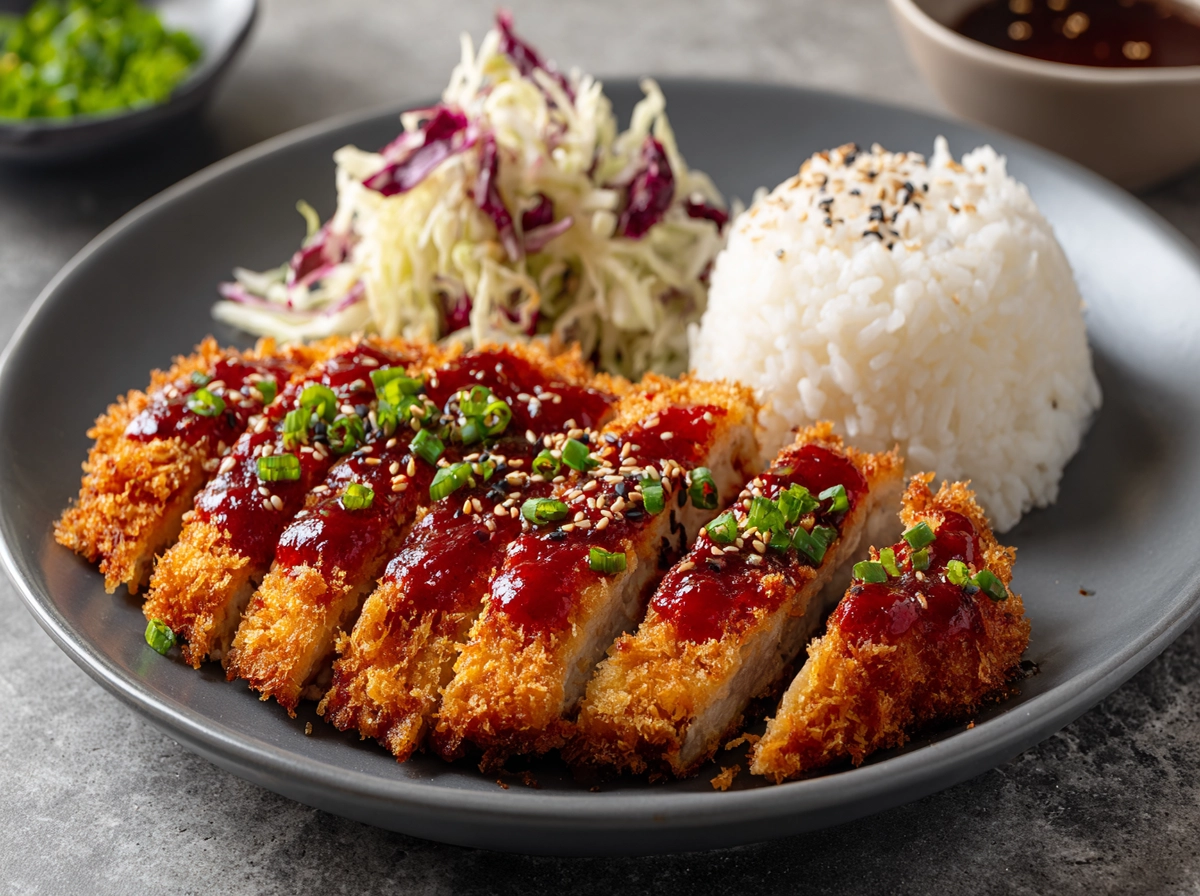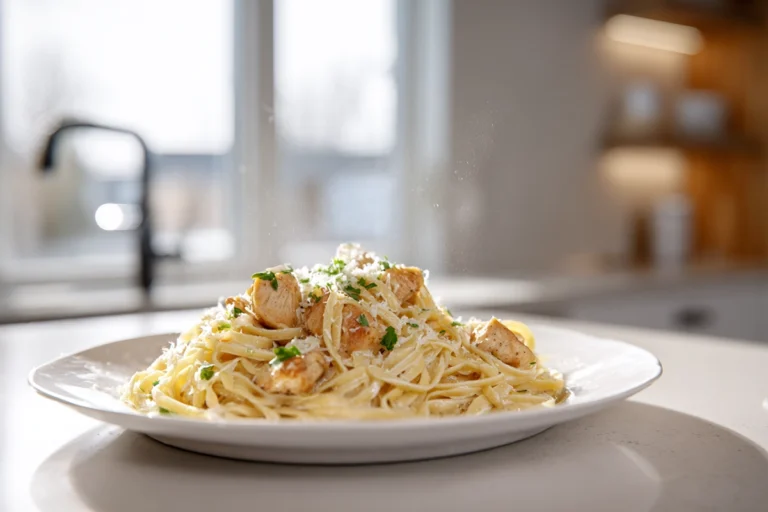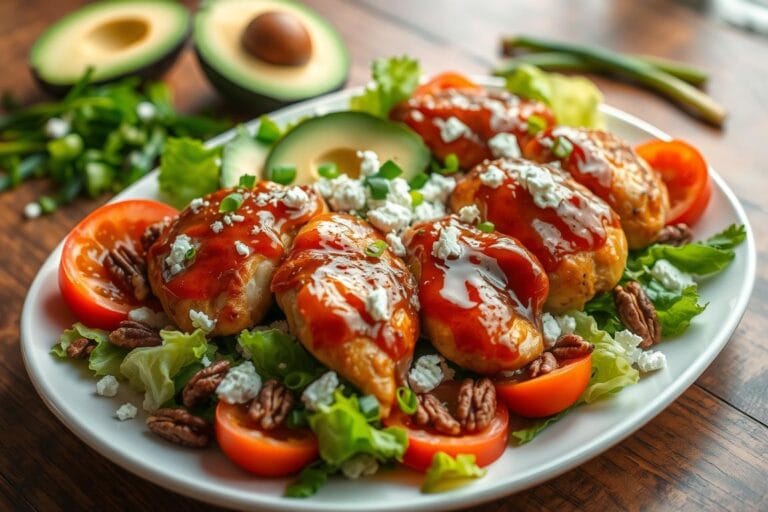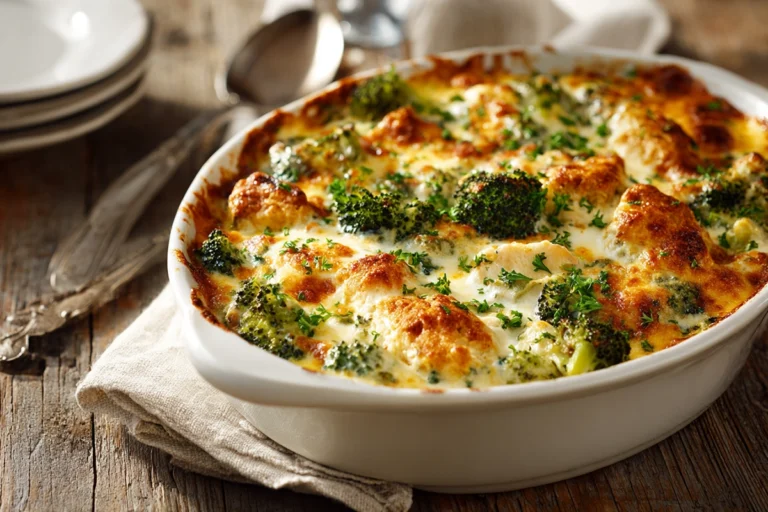Spicy Korean Chicken Katsu — Crispy Cutlets with a Fiery Kick
There’s a moment when comfort food meets bold flavor, and it feels like the best of two worlds colliding on your plate. That’s exactly what happens with Spicy Korean Chicken Katsu. You get the golden crunch of Japanese katsu paired with the deep, smoky heat of Korean spices. If you’ve ever bitten into crispy fried chicken and thought, “this needs a little more excitement,” this dish will be your answer. It’s indulgent yet balanced, spicy but not overwhelming, and surprisingly simple to make in your own kitchen.
What Is Spicy Korean Chicken Katsu?
At its core, this dish is a breaded chicken cutlet — thin slices coated in flour, dipped in egg, then pressed into panko breadcrumbs before frying. What makes it different from a classic Japanese katsu is the sauce. Instead of a sweet, tangy katsu glaze, here you whisk together a gochujang-based sauce that’s bold, savory, and packed with layers of chili heat. The flavor is reminiscent of Korean fried chicken, but you still keep the satisfying crunch and clean cutlet presentation.
You’ll notice that it’s not heavy like traditional fried chicken, but it carries far more punch than the average cutlet. For weeknight dinners or a weekend treat, it delivers that restaurant-style “fusion” feel without being complicated.
Print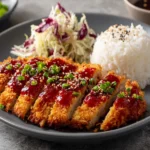
Spicy Korean Chicken Katsu
- Total Time: 40 minutes
- Yield: 4 servings 1x
Description
Crispy, golden chicken cutlets coated in panko and topped with a bold gochujang-based sauce. This Spicy Korean Chicken Katsu blends Japanese katsu crunch with Korean heat for a fiery, comforting meal.
Ingredients
2 large boneless, skinless chicken breasts (sliced in half lengthwise for 4 cutlets)
1 cup all-purpose flour
2 large eggs, beaten
2 cups panko breadcrumbs
1 teaspoon garlic powder
1 teaspoon salt
½ teaspoon black pepper
Neutral frying oil (about 1 cup for shallow frying)
Spicy Korean Sauce:
3 tablespoons gochujang (Korean chili paste)
2 tablespoons soy sauce
2 tablespoons rice vinegar
1 tablespoon honey or sugar
2 teaspoons sesame oil
2 garlic cloves, minced
1 teaspoon grated fresh ginger
Optional: ½ teaspoon chili flakes or gochugaru
Garnish:
Sliced scallions
Toasted sesame seeds
Shredded cabbage or steamed white rice
Instructions
Pound chicken breasts to even thickness, season lightly with salt and pepper.
Coat each cutlet in flour, dip in beaten egg, then press into panko breadcrumbs.
Heat neutral oil in a skillet to 350°F. Fry chicken cutlets 3–4 minutes per side until golden brown. Place on wire rack to drain.
In a small pan, combine gochujang, soy sauce, rice vinegar, honey, sesame oil, garlic, and ginger. Simmer 2–3 minutes until slightly thickened.
Slice katsu into strips. Drizzle or brush sauce over chicken, or serve on the side. Garnish with scallions, sesame seeds, and shredded cabbage or rice.
Notes
For extra crispiness, double-dip in egg and panko.
Use chicken thighs for juicier meat.
Air fryer option: 380°F for 12–15 minutes, flipping halfway.
Sauce can be made up to 3 days ahead.
- Prep Time: 20 minutes
- Cook Time: 20 minutes
- Category: Dinner
- Method: Frying (with option for Air Frying/Baking)
- Cuisine: Korean-Japanese Fusion
Nutrition
- Serving Size: 1 cutlet with sauce (approx. 1/4 recipe)
- Calories: ~520
- Sugar: 9 g
- Sodium: 920 mg
- Fat: 24 g
- Saturated Fat: 5 g
- Unsaturated Fat: 16 g
- Trans Fat: 0 g
- Carbohydrates: 46 g
- Fiber: 3 g
- Protein: 32 g
- Cholesterol: 135 mg
Ingredients You’ll Need & Why They Matter
Chicken and Breading
- 2 large boneless, skinless chicken breasts (sliced in half lengthwise for 4 cutlets)
- 1 cup all-purpose flour
- 2 large eggs, beaten
- 2 cups panko breadcrumbs
- 1 teaspoon garlic powder
- 1 teaspoon salt
- ½ teaspoon black pepper
The panko breadcrumbs are essential. Unlike regular breadcrumbs, they create a lighter, airier coating that crisps up beautifully. Seasoning the flour adds flavor from the very first layer, so you don’t end up with bland bites.
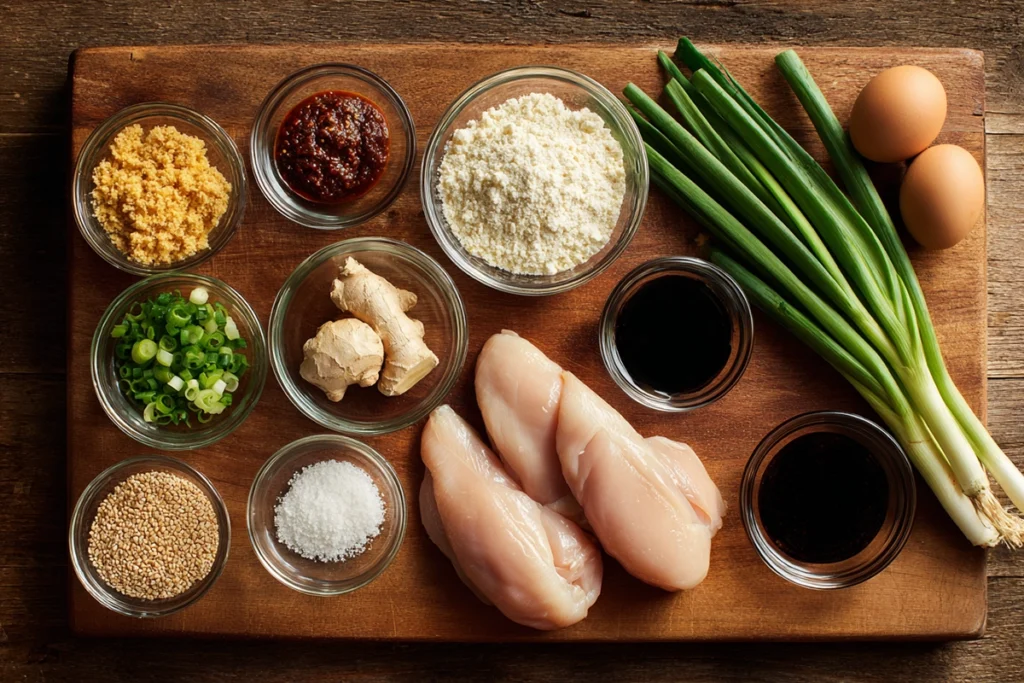
Spicy Korean Sauce
- 3 tablespoons gochujang (Korean chili paste)
- 2 tablespoons soy sauce
- 2 tablespoons rice vinegar
- 1 tablespoon honey or sugar
- 2 teaspoons sesame oil
- 2 garlic cloves, minced
- 1 teaspoon grated fresh ginger
- Optional: ½ teaspoon chili flakes or gochugaru for extra heat
This sauce isn’t just fiery — it’s balanced. The honey softens the sharp edges, the vinegar brightens everything, and sesame oil adds depth. Together, it clings to the crisp chicken cutlet without overpowering it.
Garnish
- Sliced scallions
- Toasted sesame seeds
- Thinly shredded cabbage or a side of white rice
Step-by-Step Instructions & Pro Tips
Preparing the Chicken
Lay your chicken pieces on a board and cover them with plastic wrap. Gently pound them with a mallet or rolling pin until they’re even in thickness. This ensures they cook through at the same time and stay juicy inside.
Breading Process
First, coat each cutlet in flour, shaking off the excess. Next, dip it into the beaten egg. Finally, press firmly into the panko breadcrumbs. The pressing step makes all the difference — it helps the coating cling so it doesn’t fall apart in the oil.
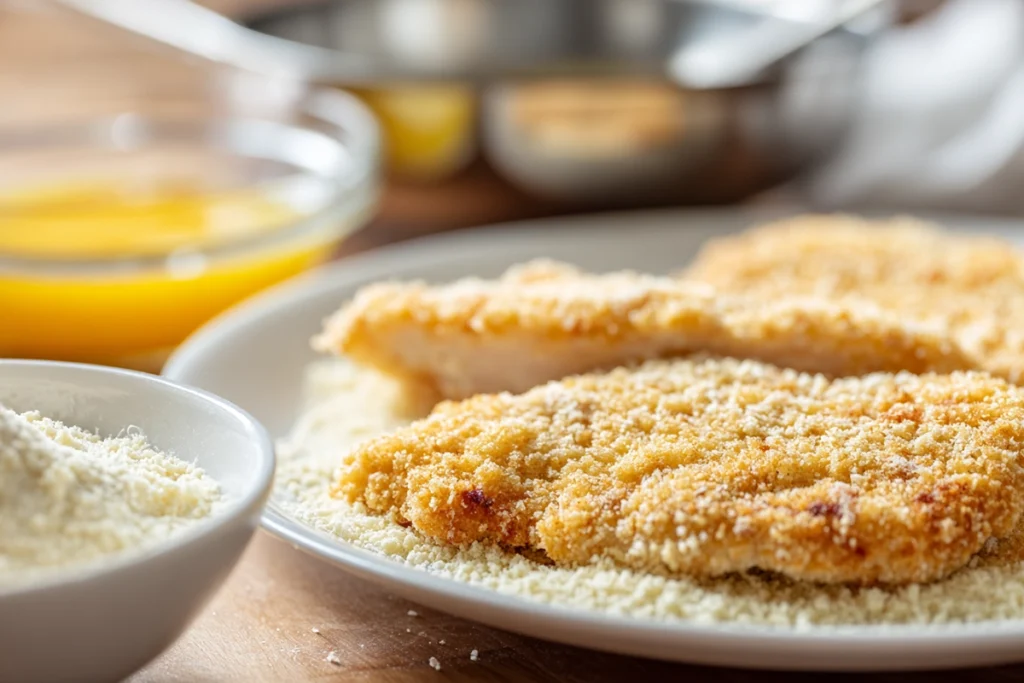
Frying the Cutlets
Heat about half an inch of neutral oil in a large skillet to 350°F. Fry the chicken in batches, about 3–4 minutes per side, until golden brown and crisp. Place the finished pieces on a wire rack instead of paper towels to prevent sogginess.
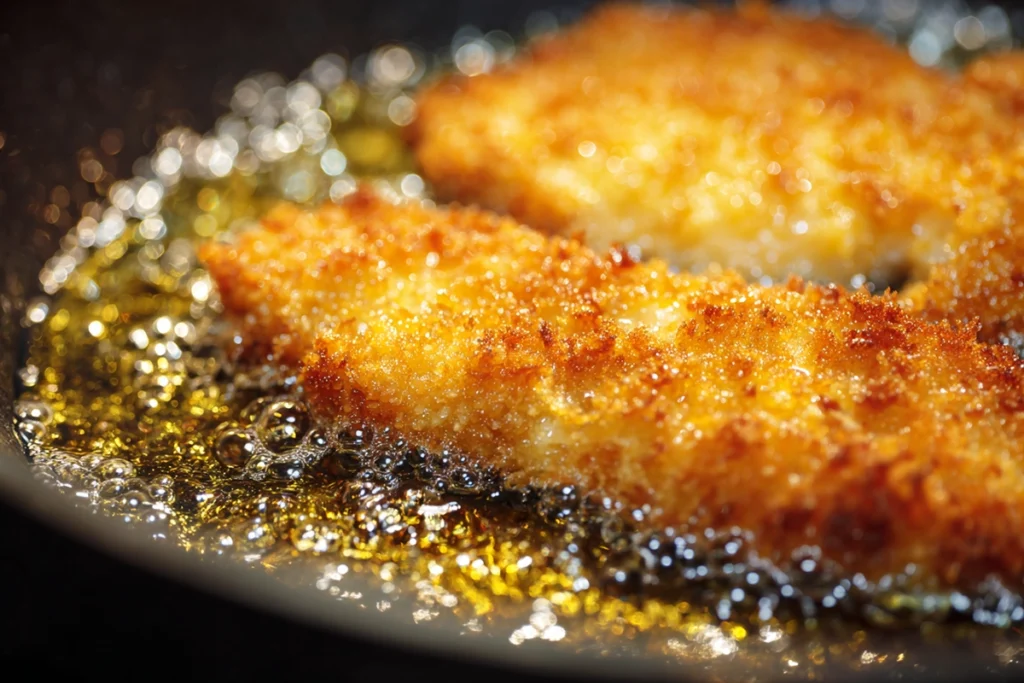
Making the Sauce
In a small pan, combine gochujang, soy sauce, vinegar, honey, sesame oil, garlic, and ginger. Simmer on low for 2–3 minutes until slightly thickened. You don’t need a long cook time; just enough to let the flavors blend.
Bringing It Together
Slice the fried cutlets into strips. Either drizzle the sauce over the top or serve it on the side for dipping. Finish with scallions and sesame seeds. The heat of the sauce against the crunch of the katsu creates the perfect balance.
Pro Tip: If you want the cutlets extra crispy, double-dip them — flour, egg, panko, then egg and panko again. It adds more crunch without feeling too heavy.
Serving Suggestions & Recipe Variations
This dish shines when paired with simple sides. A mound of steamed rice and shredded cabbage keeps the focus on the flavors. If you’re looking for a twist, turn it into a rice bowl by layering rice, katsu slices, and sauce with a fried egg on top.
You can also make a spicy chicken katsu sandwich by tucking the cutlet between two soft buns with pickles and slaw. For a lighter meal, pair it with a crisp cucumber salad or serve it alongside kimchi for a tangy kick. The sauce itself is versatile — keep it mild and sweet for kids, or ramp up the heat with extra chili flakes if you’re craving more fire.
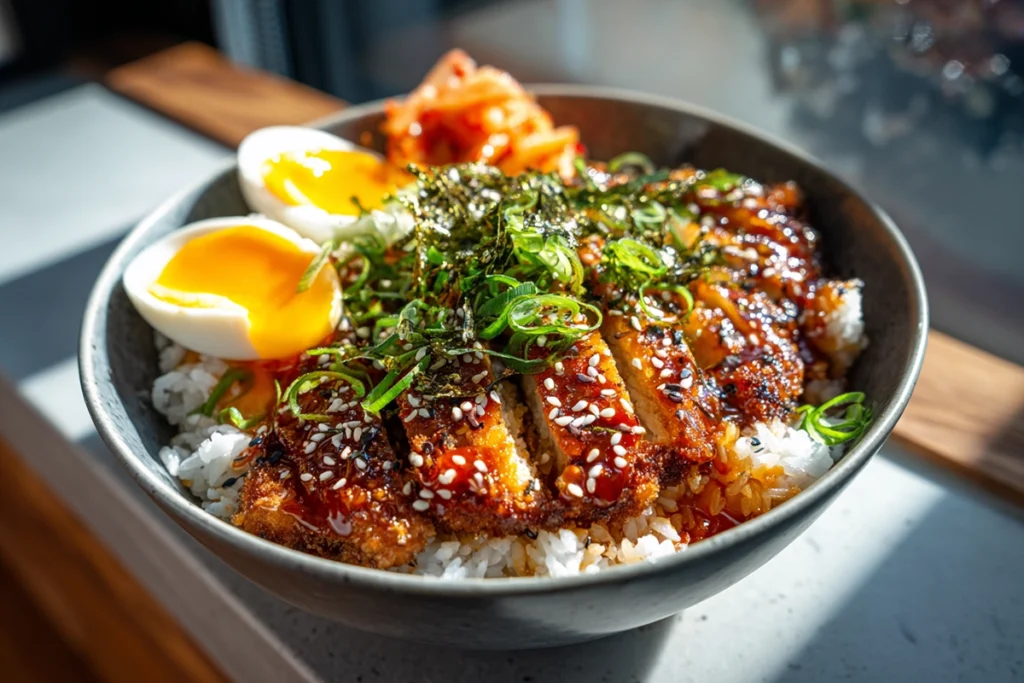
Dietary Variations & Ingredient Substitutions
- Gluten-Free: Swap the flour with rice flour or cornstarch and use gluten-free panko. Tamari is a good substitute for soy sauce.
- Vegan: Replace chicken with thick slices of tofu or cauliflower steaks. Coat them the same way and fry or air fry until crisp. Use maple syrup instead of honey in the sauce.
- Low-Calorie / Lower-Fat: Bake the breaded cutlets at 400°F for 20 minutes, flipping halfway, or cook them in an air fryer for maximum crisp with less oil.
- Halal: Simply ensure your chicken is halal-certified and double-check the soy sauce brand to confirm compliance.
Each substitution shifts the flavor slightly, but the spirit of the dish stays the same: crunchy cutlets with bold, spicy-sweet sauce.
Storage, Reheating & Make-Ahead Tips
If you’ve got leftovers, store them in an airtight container in the fridge for up to 3 days. For reheating, avoid the microwave — it softens the breading. Instead, pop them in a 375°F oven or toaster oven until hot and crisp. An air fryer works perfectly for this, too.
You can also bread the chicken ahead of time and refrigerate the uncooked cutlets for up to 12 hours before frying. The sauce can be made up to 3 days in advance and stored in the fridge. Just reheat it gently before serving.
Troubleshooting & Common Issues
If your breading falls off, it’s usually because the chicken wasn’t dry enough before dredging, or the oil wasn’t hot enough. Always pat the chicken dry and maintain steady oil heat. If the sauce tastes too sharp, add a little more honey. If it’s too thick, thin it with a splash of water.
And if you find the spice level overwhelming, cut the gochujang with a bit more honey or serve the sauce on the side so everyone can adjust to taste.
When you sit down with a plate of Spicy Korean Chicken Katsu, you’re getting comfort and heat in every bite. It’s a dish that proves you don’t need a long list of complicated steps to make something restaurant-worthy. With a few pantry staples and a little frying time, you’ll have a meal that turns a regular dinner into a flavour-packed experience.
FAQ
Can I make Spicy Korean Chicken Katsu in an air fryer instead of deep frying?
Yes — you can air-fry the breaded cutlets at around 380 °F for 12–15 minutes (flip halfway) until golden and cooked through. Lightly spray oil on both sides so the panko crisps nicely.
How spicy is the gochujang sauce in this recipe?
Gochujang has a moderate heat with sweetness and umami — it’s not overwhelming for most people. If you prefer mild, reduce the gochugaru or chili flakes; for extra heat, add more.
Can I use chicken thighs instead of breasts?
Absolutely. Thighs are juicier and more forgiving. Just trim any excess fat, pound to even thickness, and follow the same breading/frying steps.
How long will leftovers keep, and how should I reheat them?
Leftovers stored in an airtight container last about 3 days in the fridge. Reheat in a 375 °F oven or air fryer until crisp — avoid the microwave, which softens the coating.
What can I serve with spicy chicken katsu for a complete meal?
This dish pairs wonderfully with steamed white rice, shredded cabbage slaw, pickled radishes, cucumber salad, or a side of kimchi for extra punch.
What Are Our Readers Saying?
There are no reviews yet. Be the first one to write one.

